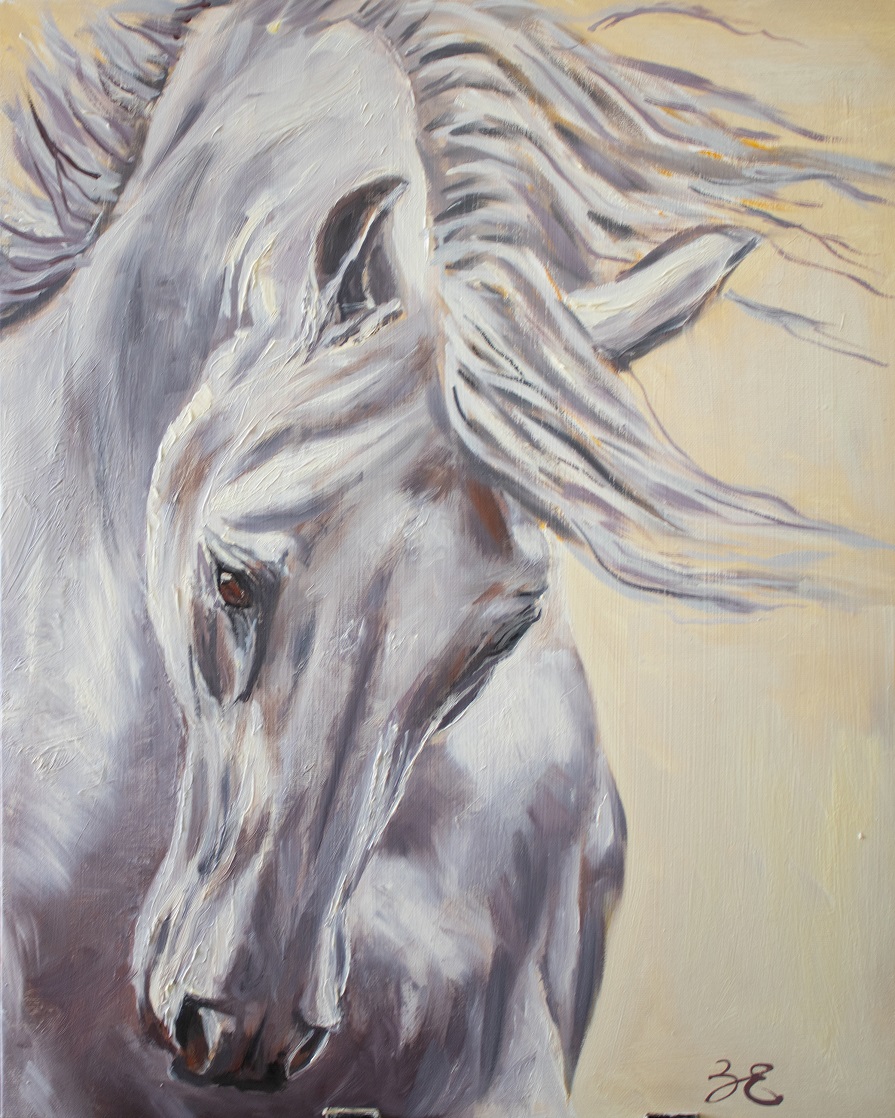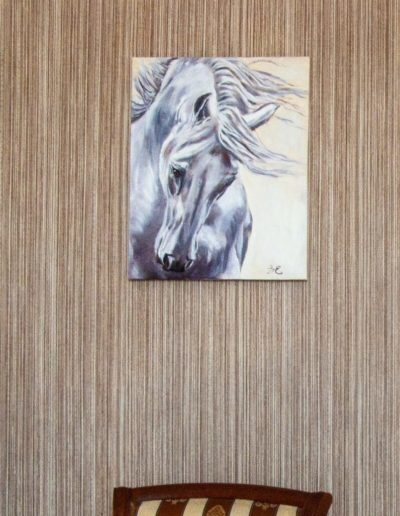White horse
White horse is a rare color that comes in two forms — true white and albinism. In both cases, horses with white shades of coats show abnormalities and diseases that make breeding difficult. In history, there is only one more or less successful experience in creating a breed with completely white horses — in the 16-17 centuries in Denmark, but due to pathological processes (primarily infertility), it was not possible to consolidate the results. Currently, light-colored horses are found in many breeds, but their cases are rare, which makes them even more valuable. Handmade oil painting.
See other paintings by Evgenia Zragevskaya here: Rope game
The color consists of two components — the color of the coat and the skin. In white horses, the skin is always pink. Also, white hair grows on the pink skin, forming marks on other suits. Often horses with a light gray hair color are referred to as whites, which lightens strongly with age. But this suit has the main differences — the skin has a gray tint, and there is a small amount of black hair in the skin. Real white horses have unpigmented skin and colorless hair. Most of the individuals have brown eyes, although blue-eyed animals are found. Already from birth (unlike gray foals, which brighten with age), foals have white hair on their pink skin. Partial pigmentation of the skin and coat is rarely observed, but fading occurs over time, while gray horses, even at an old age, retain the pigmentation of the epidermis.
Genetic factors of inheritance of white color White color is caused by areas of skin without melanocytes — specialized cells that provide color. Their presence or absence is due to genetic dependence. Currently, the exact mechanism of color inheritance in horses is not fully understood. More often than others, the dominant white color is found in heterozygous individuals. The effect of incomplete dominance ensures the manifestation of color, but also preserves the viability of individuals — homozygous white horses do not exist, which is explained by embryonic mortality. But heterozygotes are not devoid of health problems — they are prone to anemia and increased sensitivity of the skin to solar radiation. Infertile individuals are also common. Coloration due to this gene is found in most breeds. White horses are more likely to be carriers of congenital genetic abnormalities. Often, white horses are animals with a special type of sabino coloration, which is manifested in carriers of the Sabino-1 gene. This results in slight skin mottling — often the entire epidermis is pink with small, barely visible markings. Coloration is more common in American breeds (Pinto, mini-horse, paint horse, mustangs). When studying the mortality of foals of the American painthorse breed, a dependence with color was revealed. Most of the dead animals were white. The disease, later called «fatal white syndrome», is explained by the presence of the Overo gene, which leads to changes in the colon — innervation is disturbed in horses. As a result, on the third day after giving birth, the foals die from severe colic.








